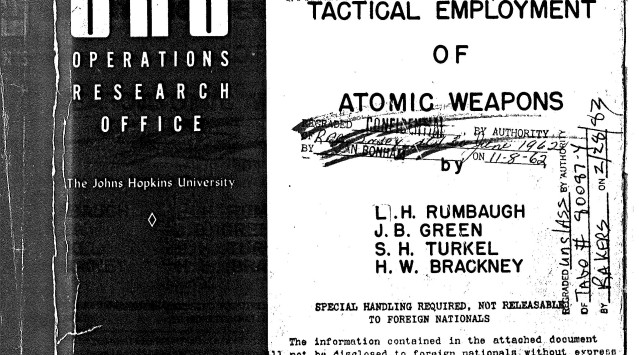Author/Editor: L. H. Rumbaugh, J. B. Green, S. H. Turkel, H.W. Brackney
Publisher/Sponsor: Operations Research Office, Far East Command
Supplier: Johns Hopkins University
Report Date: March 1st, 1951
Classification: Declassified
Click here to read the full report.
Description:
By 1951 it was apparent that the Soviet nuclear explosion in 1949 had already cut short the era of U.S. nuclear omnipotence and in Korea, the U.S. military’s began to worry about nuclear attack. “In the problem of defense,” advises this March 1951 Johns Hopkins
report by to General MacArthur, “there is the question as to whether one’s own forces and installations are so disposed as to be vulnerable and, if so, what more suitable dispositions and defenses are possible.”
To answer this question, the report analyzes whether UN Command field troops, army and air force headquarters at Taegu, and UN airfields would have been lucrative nuclear targets as the situation stood on December 31, 1950; and whether Pusan, the logistical port through which poured 80 percent of the supplies to fight the war, was vulnerable on October 16, 1950. The dates selected were critical junctures in the war for which the researchers had detailed intelligence reports.
The report shows that each of these targets was indeed vulnerable. Each target was sufficiently valuable to justify using nuclear weapons; each target could be identified; and none of them could assuredly stop a nuclear attack.
This report was released to the Nautilus Institute under the US Freedom of Information Act (FOIA).


